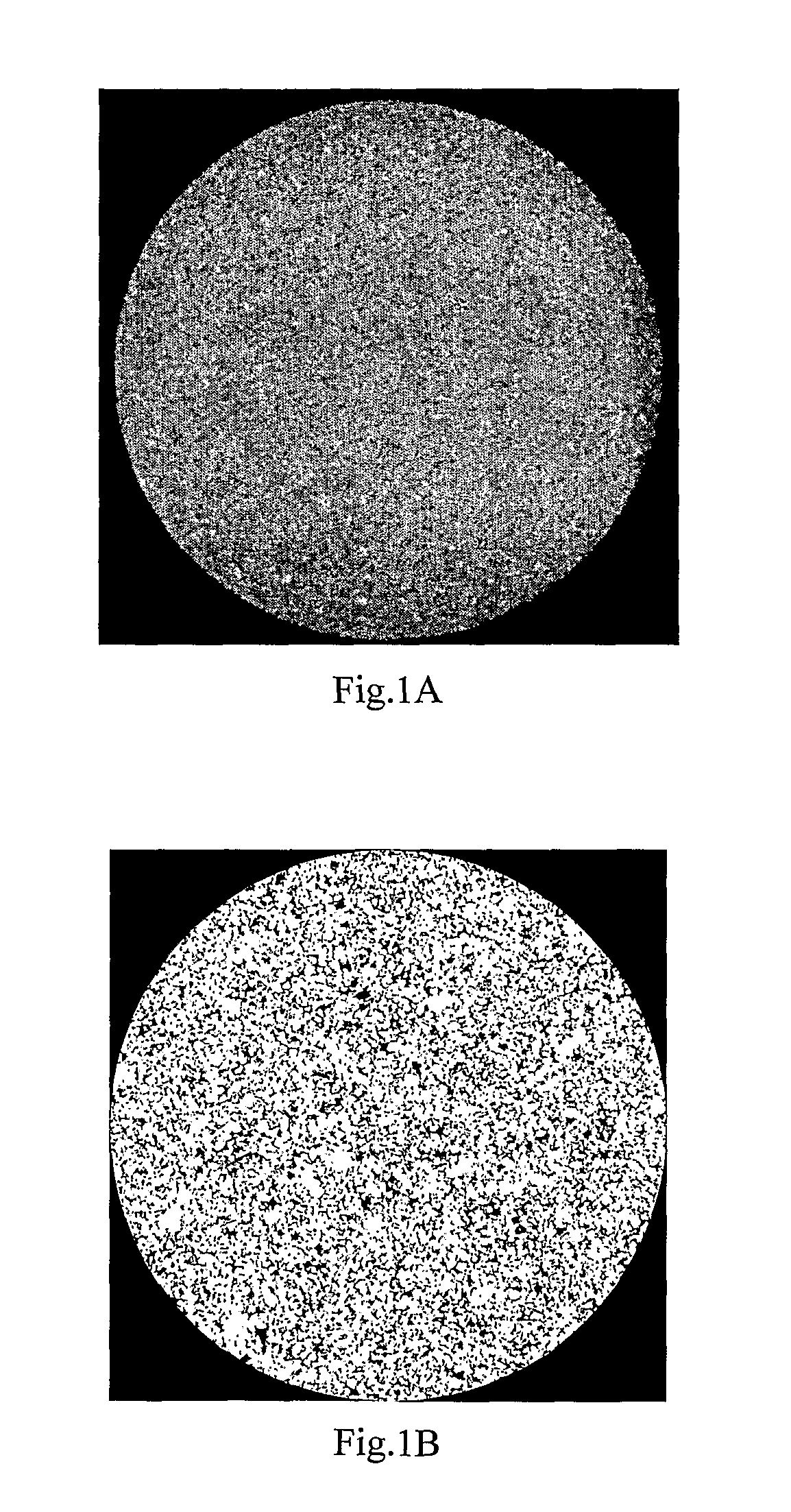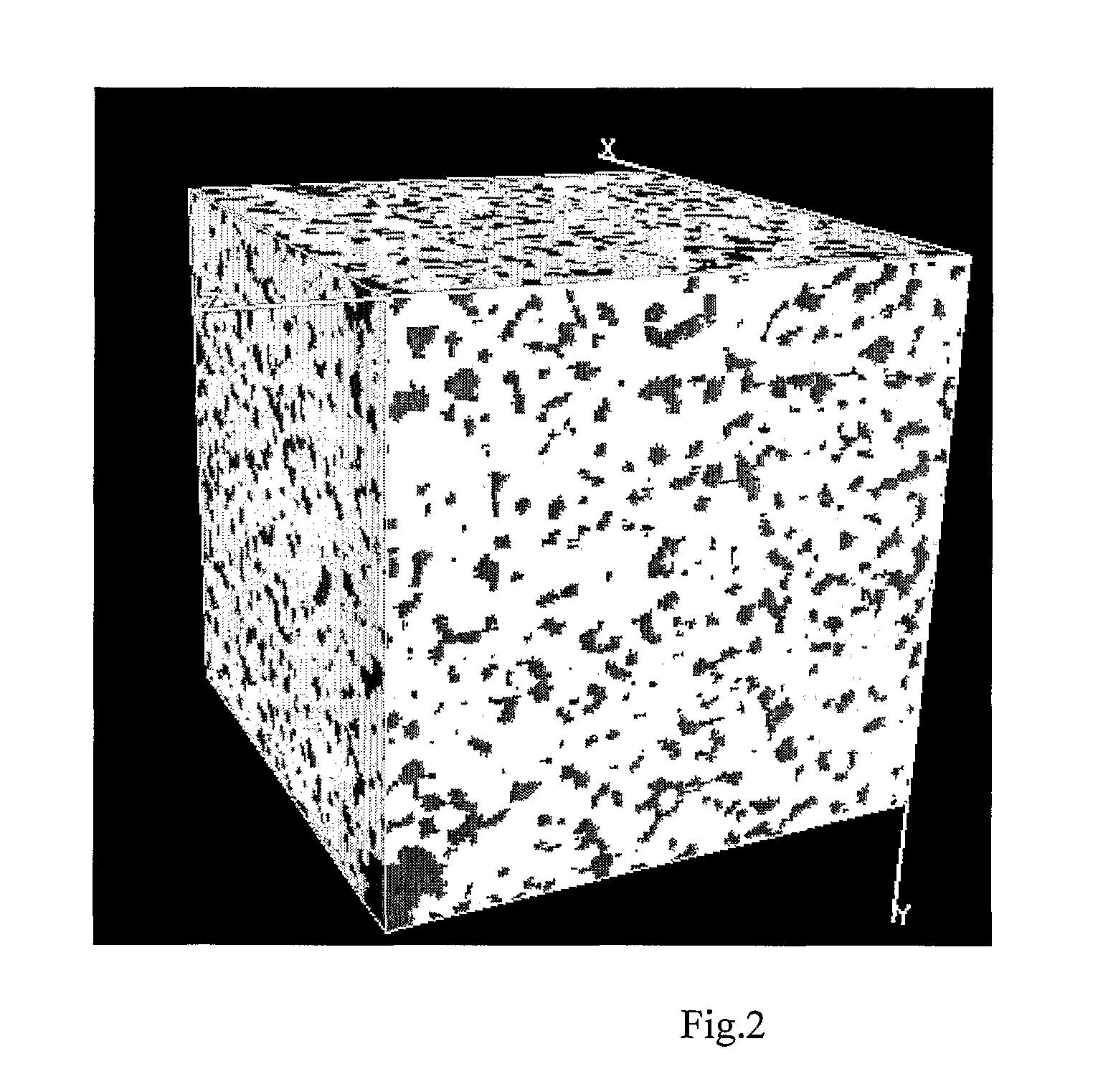Numerical method of calculating heat, mass, chemical and electric transport for three-dimensional porous solid
a three-dimensional porous solid and numerical method technology, applied in the direction of instruments, cad techniques, design optimisation/simulation, etc., can solve the problems of insufficient approach, insufficient macroscopy models, and inability to a priori be sure that the considered material can be adequately described by some standard macroscopic continuous medium model under realistic conditions
- Summary
- Abstract
- Description
- Claims
- Application Information
AI Technical Summary
Problems solved by technology
Method used
Image
Examples
case 1
[0021]Water has newtonian rheology, hydrocarbon fluid has newtonian rheology.
Water: ρw=1000 kg / m3, mw=18 kg / m3, μsw=0.001 Pa·s, μνw=0.1 Pa·s
Hydrocarbon fluid: ρh=800 kg / m3, mh=100 kg / m3, μνw=0.1 Pa·s
Water-Hydrocarbon fluid interfacial surface tension: σwh=0.022 N / m
case 2
[0022]Water has newtonian rheology, hydrocarbon fluid has non-newtonian rheology, namely hydrocarbon fluid is shear thickening, also known as dilatant. In this case one cannot define macroscopic phase permeabilities.
Water: ρw=1000 kg / m3, mw=18 kg / m3, μsw=0.001 Pa·s, μνw=0.1 Pa·s
Hydrocarbon fluid: ρh=800 kg / m3, mh=100 kg / m3, kh=0.003 Pa·sn, nh=1.1
Water-Hydrocarbon fluid interfacial surface tension: σwh=0.022 N / m
where
[0023]ρw—water mass density[0024]ρh—hydrocarbon fluid mass density[0025]mw—water molar mass[0026]mh—hydrocarbon fluid molar mass[0027]μsw, μνw—water shear and volume viscosities respectively[0028]μsh, μνh—hydrocarbon fluid shear and volume viscosities respectively[0029]kh Pa·sn—hydrocarbon fluid consistency index[0030]nh—hydrocarbon fluid consistency power
Properties of Porous Solid
Rock is water wet homogeneously, contact angle is 25°.
Boundary Conditions
The fluids flow is driven by macroscopic pressure gradient equal to 50 bar / m.
[0031]The fluxes, which are obtained at the ...
PUM
 Login to View More
Login to View More Abstract
Description
Claims
Application Information
 Login to View More
Login to View More - R&D
- Intellectual Property
- Life Sciences
- Materials
- Tech Scout
- Unparalleled Data Quality
- Higher Quality Content
- 60% Fewer Hallucinations
Browse by: Latest US Patents, China's latest patents, Technical Efficacy Thesaurus, Application Domain, Technology Topic, Popular Technical Reports.
© 2025 PatSnap. All rights reserved.Legal|Privacy policy|Modern Slavery Act Transparency Statement|Sitemap|About US| Contact US: help@patsnap.com



